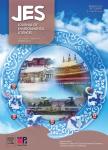Characterizing ionic species in PM_(2.5) and PM_(10) in four Pearl River Delta cities,South China
Characterizing ionic species in PM_(2.5) and PM_(10) in four Pearl River Delta cities,South China作者机构:School of Chemistry and Chemical Engineering Sun Yat-sen University Guangzhou 510275 China. Department of Civil and Structural Engineering The Hong Kong Polytechnic University Hong Kong State Key Laboratory of Loess and Quaternary Geology Institute of Earth Environment Chinese Academy of Sciences Xi' an 710075 China
出 版 物:《Journal of Environmental Sciences》 (环境科学学报(英文版))
年 卷 期:2007年第19卷第8期
页 面:939-947页
核心收录:
学科分类:07[理学] 0705[理学-地理学] 070501[理学-自然地理学]
基 金:Project supported by the National Natural Science Founding of China(No.20347003,40121303) the Research Grants Council of Hong Kong(No.PolyU5038/01E,PolyU5145/03E) the Area of Strategic Development on Atmospheric and Urban Air Pollution of The Hong Kong Polytechnic University(No.A516,A510)
主 题:water-soluble ions seasonal and spatial variations Pearl River Delta
摘 要:PM2.5 and PM10 samples were collected at four major cities in the Pearl River Delta (PRD), South China, during winter and summer in 2002. Six water-soluble ions, Na^+, NH4+, K^+, Cl^-, NO3^- and SO4^2- were measured using ion chromatography. On average, ionic species accounted for 53.3% and 40.5% for PM2.5 and PM10, respectively in winter and 39.4% and 35.2%, respectively in summer. Secondary ions such as sulfate, nitrate and ammonium accounted for the major part of the total ionic species. Sulfate was the most abundant species followed by nitrate. Overall, a regional pollution tendency was shown that there were higher concentrations of sulfate, nitrate and ammonium in Guangzhou City than those in the other PRD cities. Significant seasonal variations were also observed with higher levels of species in winter but lower in summer. The Asian monsoon system was favorable for removal and diffusion of air pollutants in PRD in summer while highly loading of local industrial emissions tended to deteriorate the air quality as well. NO3^-/SO4^2- ratio indicated that mobile sources have considerably contribution to the urban aerosol, and stationary sources should not be neglected. Besides the primary emissions, complex atmospheric reactions under favorable weather conditions should be paid more attention for the control of primary emission in the PRD region.



